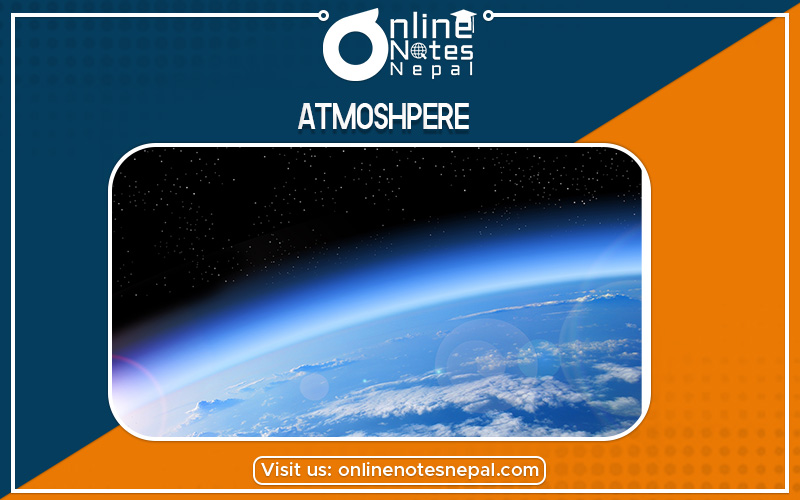Published by: Zaya
Published date: 06 Jul 2021

The atmosphere is the blanket of gases that surrounds Earth. It is held near the surface of the planet by Earth's gravitational attraction. Without the atmosphere, there could be no life on Earth. The atmosphere keeps the climate on Earth moderate compared to that of other planets.
The atmosphere is divided into five layers. They are:
The troposphere is the lowest layer of our atmosphere. Starting at ground level, it extends upward to about 10 km (6.2 miles or about 33,000 feet) above sea level. We, humans, live in the troposphere, and nearly all weather occurs in this lowest layer. Most clouds appear here, mainly because 99% of the water vapour in the atmosphere is found in the troposphere. Air pressure drops, and temperatures get colder, as you climb higher in the troposphere.
The next layer up is called the stratosphere. The stratosphere extends from the top of the troposphere to about 50 km (31 miles) above the ground. The infamous ozone layer is found within the stratosphere. Ozone molecules in this layer absorb high-energy ultraviolet (UV) light from the Sun, converting the UV energy into heat. Unlike the troposphere, the stratosphere actually gets warmer the higher you go.
Above the stratosphere is the mesosphere. It extends upward to a height of about 85 km (53 miles) above our planet. Most meteors burn up in the mesosphere. Unlike the stratosphere, temperatures once again grow colder as you rise up through the mesosphere. The coldest temperatures in Earth's atmosphere, about -90° C (-130° F), are found near the top of this layer. The air in the mesosphere is far too thin to breathe; air pressure at the bottom of the layer is well below 1% of the pressure at sea level and continues dropping as you go higher.
The layer of very rare air above the mesosphere is called the thermosphere. High-energy X-rays and UV radiation from the Sun are absorbed in the thermosphere, raising its temperature to hundreds or at times thousands of degrees. However, the air in this layer is so thin that it would feel freezing cold to us! In many ways, the thermosphere is more like outer space than a part of the atmosphere. Many satellites actually orbit Earth within the thermosphere! Variations in the amount of energy coming from the Sun exert a powerful influence on both the height of the top of this layer and the temperature within it.
Although some experts consider the thermosphere to be the uppermost layer of our atmosphere, others consider the exosphere to be the actual "final frontier" of Earth's gaseous envelope. As you might imagine, the "air" in the exosphere is very, very, very thin, making this layer even more space-like than the thermosphere. In fact, the air in the exosphere is constantly - though very gradually - "leaking" out of Earth's atmosphere into outer space.
Ozone is a gas in the atmosphere that protects everything living on the Earth from harmful ultraviolet (UV) rays from the Sun. The ozone layer acts as a shield to absorb the UV rays, and keep them from doing damage to the Earth's surface. It is extended from 16 km to 50 km above the earth's surface. Its thickness is 34 Km. This layer is clear and cloudless and jet planes fly in this layer. This thick layer of air absorbs most of the solar radiation. Due to the absorption of solar radiation, the temperature of the stratosphere increases as the increase in altitude. The ozone layer protects the earth from harmful radiation and if there is ozone layer depletion then rays of the sun enter earth without any obstacle which causes the rise in temperature of the earth.
The main cause of ozone layer depletion is the chemical substance produced by the human. Chlorofluorocarbon is the major chemical substance that destroys the ozone layer. Along with this, chlorinated compounds such as methyl chloroform, carbon tetrachloride, methyl bromide, etc. also destroy the ozone layer.
The three points to conserve the ozone layer are:
a. The production and use of CFC should be banned.
b. The alternatives for the CFCs should be developed.
c. Release of oxides of nitrogen should be avoided.
The greenhouse effect is the problem caused by increased quantities of gases such as carbon dioxide in the air. These gases trap the heat from the sun and cause a gradual rise in the temperature of the Earth's atmosphere. It is required to maintain the temperature of the earth's surface. The over greenhouse effect made lead to an increase in temperature, global warming, effect on the environment, and so on.
The effects caused by the greenhouse are as follows:
The importance of artificial greenhouse are as follows:
In the process of industrial production, different types of toxic gases, lead, metal, complex organic compounds, etc. are released. These gases produced in industrial production are known as industrial gases. Due to the increase in industrial gases, the air gets polluted. Along with that, it also affects the weather. When rain falls on the earth's surface, due to the presence of industrial gases, acid rain occurs.